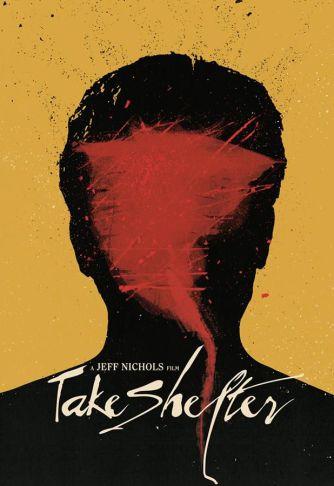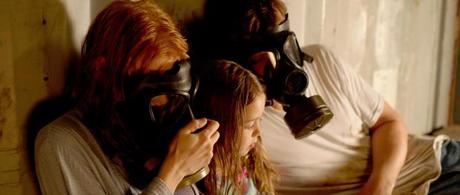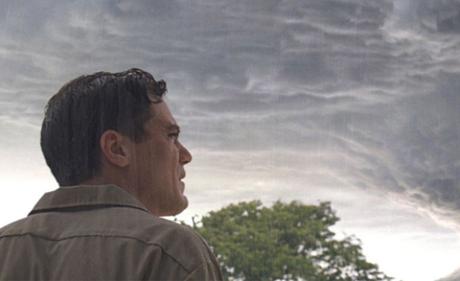Phobia Philms: 'Take Shelter'
 In "Phobia Philms," I plan on reviewing and recommending scary movies based on real phobias, of which there is no shortage of, specifically what makes them scary and how they represent our anxieties.
In "Phobia Philms," I plan on reviewing and recommending scary movies based on real phobias, of which there is no shortage of, specifically what makes them scary and how they represent our anxieties.
Dementophobia - the fear of going insane
Jeff Nichols is one of the best new directors working today. He is 5 movies in, and each of them is worth your time. Each dissects a different aspect of the Southern zeitgeist in such a way that deserves a much longer and more thorough article. That isn't this one. This is only looking at one of his movies and has nothing to do with its specific thoughts on the South.
To talk about Take Shelter, Jeff Nichols' 2011 semi-supernatural thriller starring frequent collaborator, Michael Shannon, we need to start at the end. In case you missed the spoiler warning at the top of the page: SPOILERS. Michael Shannon's quiet family man, Curtis, is standing on the beach playing with his young daughter. He notices a very ominous storm cloud in the distance hovering over the ocean moving toward them. More importantly, he notices his daughter notice it, and we, the audience, notice his wife, Samantha (played by an excellent Jessica Chastain) notice it.
If you have read this far but haven't seen the movie, this might sound very dumb to you, but the whole movie was about Curtis dealing with visions of an oncoming storm that represented the end of the world. Curtis already has enough on his plate struggling daily to make ends meet considering his deaf daughter's hefty medical bills, but on top of that, he occasionally has nightmares that eventually evolve into a daytime hallucinations that he starts to regard as prophetic.
A lot of people interpret the ending, where both his daughter and wife notice the oncoming storm and join him in his delusions, as a confirmation that his visions were truly prophetic. However, something Christopher Nolan said about the ending of Inception made me see this ending differently. Inception leaves us with a cliffhanger where it cuts to black before one of two things could happen (I won't spoil a movie that this article isn't mainly about). So while fans separated into 2 camps arguing for one of the two events, Nolan pointed out that everyone missed what was actually important: the protagonist no longer relies on determining which event takes place. The ending isn't about whether the storm is really there or not, but how the characters are reacting to it.

Curtis' mother has a form of psychosis that has isolated her in a facility where they can take care of her 24/7. The implication that Curtis is scared of inheriting this illness follows him around and forces him to struggle almost exclusively in silence until it is too late. By the time Samantha realizes that he is in need of serious psychological help, Curtis had already expanded their storm cellar, bought gas masks, lost his job, and ruined his relationship with his best friend. He was way passed the point of reasonable conversation, when he was forcing them into the storm cellar, where he planned for them to stay for a long time.
Of course, the storm never came. At least, not a big world-ending one. Curtis sought professional help. He and Samantha started rebuilding their relationship. They learn that they are stronger together. That hiding these issues only makes it worse. So, when Samantha and their daughter share a vision with him on the beach, pay closer attention to how Curtis is reacting than Samantha. He runs to her side, calls out her name, and she acknowledges his vision. It isn't that the storm is actually there, but that Curtis is no longer alone in dealing with it. He is trusting in his support system to help him get through his mental health concerns.
They say thinking you are losing your mind is a prime example that you are actually sane. Sounds more like a wordy bumper sticker, but I think there is some truth to it. It is a vulnerable and embarrassing place to be when your mind starts perceiving reality differently than you are supposed to. You might be afraid or ashamed to come forward about it. Nichols portrays it very Sisyphean. The tension in this movie has a very real snowball effect as the movie continues. It just crawls slow and steady further up your spine. In its own way, it definitely simulates impending embarrassment, as if you can tell that people are noticing your faults. However, you cannot deal with it unless you can be honest about it.

Next time: The Coen brothers reach peak fatalism with a couple of coin tosses

